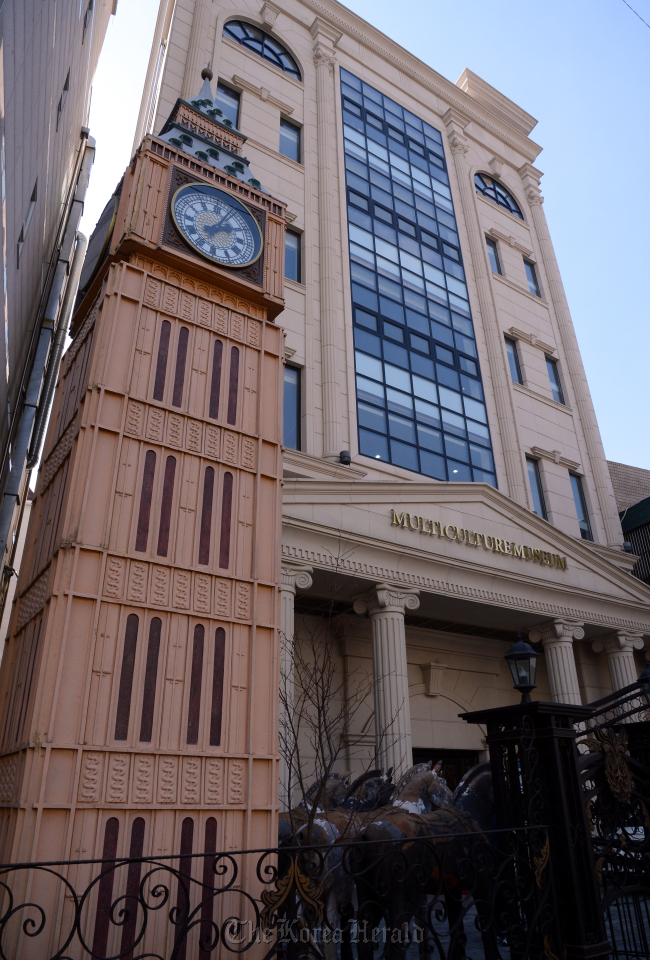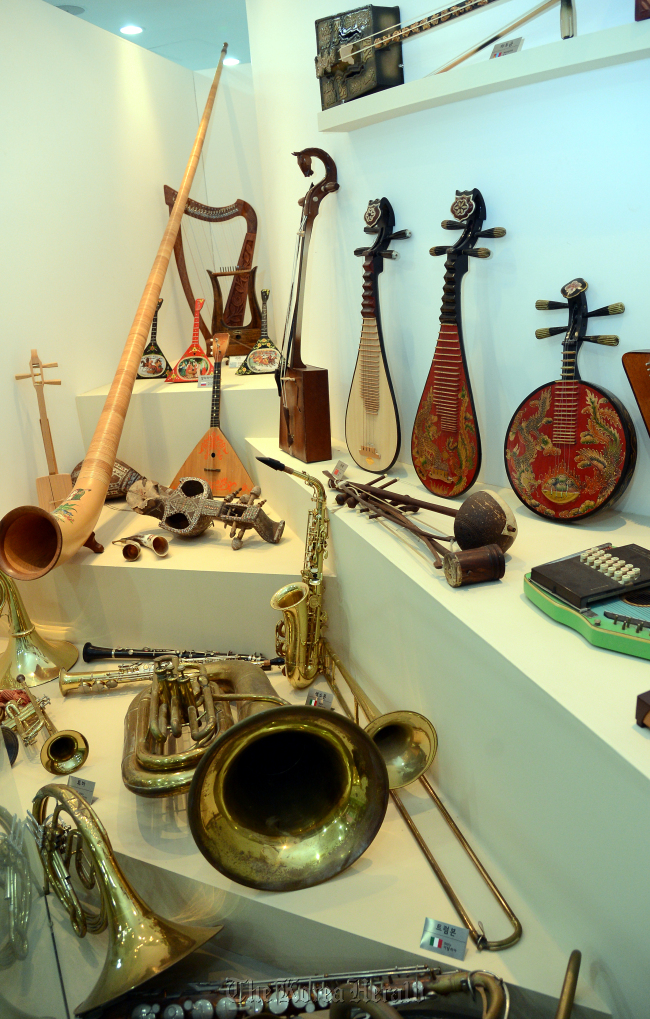Discover the globe without ever leaving Seoul
Multiculture Museum unites cultures of the world
By Korea HeraldPublished : March 5, 2013 - 20:19
The following is part of a series exploring unique museums, collections and the passionate collectors behind them. ― Ed.
For those who love to travel, explore and learn about new cultures, the question of “Where to go?” can present a daunting series of tough decisions to make. With so many places on this spinning rock to choose from, a simple Google search to research and absorb a quick study of a city or country doesn’t quite have the same effect as, say, a visual or hands-on cultural experience.
The Multiculture Museum is a one-of-a-kind museum that offers just that ― a place where globe trotters, the curious or those who just don’t have the means to go abroad can explore a wide-range of cultures. From history to architecture, music and attire, the five-story museum houses an endless collection of artifacts, replicas, figurines, instruments and costumes from around the world in hopes of educating visitors about other nations.
For those who love to travel, explore and learn about new cultures, the question of “Where to go?” can present a daunting series of tough decisions to make. With so many places on this spinning rock to choose from, a simple Google search to research and absorb a quick study of a city or country doesn’t quite have the same effect as, say, a visual or hands-on cultural experience.
The Multiculture Museum is a one-of-a-kind museum that offers just that ― a place where globe trotters, the curious or those who just don’t have the means to go abroad can explore a wide-range of cultures. From history to architecture, music and attire, the five-story museum houses an endless collection of artifacts, replicas, figurines, instruments and costumes from around the world in hopes of educating visitors about other nations.

The museum has individual exhibitions that focus on 10 different countries: Italy, Turkey, Mongolia, India, Russia, the Netherlands, the United States, Egypt, China and Thailand. The displays include small-scale replicas of the Leaning Tower of Pisa, the Taj Mahal, Saint Basil’s Cathedral, the Statue of Liberty and even a large replication of the Trojan Horse of Troy where visitors can step inside and gaze at various Turkish artifacts.
Many of the artifacts and figurines on display in the museum have been donated by various foreign ambassadors and embassies in appreciation of the work being done by the museum.
Along with the individual exhibitions, the Multiculture Museum also offers visitors the unique opportunities to participate in hands-on courses that spotlight one country, and rotates countries on a monthly basis so that visitors can continue to partake and learn about a new culture. The museum has experience courses on traditional music, cooking and costuming and all the classes are authentic in that they all are conducted by native citizens of that particular country.

Aside from offering visitors a more exciting and impactful way to learn about other cultures, Kim Yun-tae, the director of the Multiculture Museum, also hopes that his museum can play its part in educating visitors, especially locals, about multiculturalism and non-ignorance when it comes to people from other countries.
“The first question most Koreans ask when they see a foreigner is, ‘Where do you come from?’” said Kim. “However, their responses usually show off their ignorance about other cultures.”
“Thinking that Canadians are no different than Americans, would be like treating Koreans as if they were no different from the Japanese or other Asians,” he said. “And this is something that many Koreans would take offense at.”
The director stated that one of the driving forces behind his decision to establish the country’s only multiculture museum is the wish to bridge the gap between Koreans and internationals. With the continued increase in the number of multiethnic families in Korea, Kim sees a drastic need to educate young people about the world and hopes to help disengage the stereotypical behaviors and mindsets that many Korean people have when they think about the world “multiculture.”
“When many Korean people hear the word ‘multiculture,’ the first thing that typically comes to mind are images of those who are underprivileged and are in need of help,” he said. “People have told me on numerous occasions that I should change the name of the museum. However, I do not agree.”
Although several Koreans have told the director that when they hear the name of the museum, they assume that it is some kind of charitable museum that focuses on poor countries, he is firm in his agenda to inform these people that the word multiculture should not be associated with any type of negative connotations.
“This is an unfortunate aspect of our society,” he said. “I hope one day the term multiculture will lose its stigma in Korea.”
The Multiculture Museum also publishes educational books and DVDs for children to learn about different cultures at home or in the classroom.
■ Multiculture Museum
(02) 323-6848
● Location: 13-27 Bulgwang-dong, Eunpyeong-gu, Seoul
● Hours: General admission: 1 p.m. -6 p.m. (weekdays), 10 a.m.-6 p.m. (weekends)/Experience package times varies, best to call ahead.
● Admission: 7,000 won for adults; 6,000 won for students; 5,000 won children/Experience packages vary from 6,000 won-12,000 won.
For more information, visit www.multiculturemuseum.com/
By Julie Jackson (juliejackson@heraldcorp.com)
-
Articles by Korea Herald



















![[Today’s K-pop] Treasure to publish magazine for debut anniversary](http://res.heraldm.com/phpwas/restmb_idxmake.php?idx=642&simg=/content/image/2024/07/26/20240726050551_0.jpg&u=)